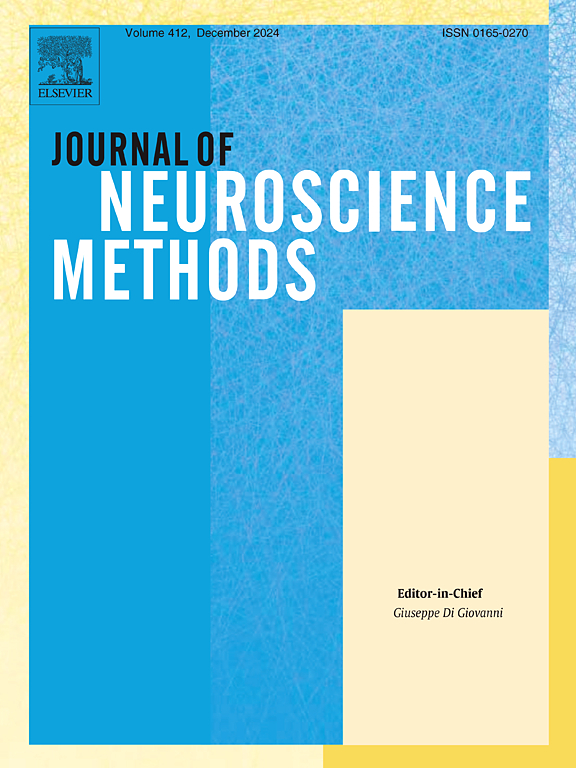Flexible modeling of large-scale neural network stimulation: Electrical and optical extensions to The Virtual Electrode Recording Tool for EXtracellular Potentials (VERTEX)
IF 2.3
4区 医学
Q2 BIOCHEMICAL RESEARCH METHODS
引用次数: 0
Abstract
Background
Computational models that predict effects of neural stimulation can serve as a preliminary tool to inform in-vivo research, reducing costs, time, and ethical considerations. However, current models do not support the diverse neural stimulation techniques used in-vivo, including the expanding selection of electrodes, stimulation modalities, and stimulation protocols.
New method
We developed several extensions to The Virtual Electrode Recording Tool for EXtracellular Potentials (VERTEX), the MATLAB-based neural stimulation tool. VERTEX simulates input currents in a large population of multi-compartment neurons within a small cortical slice to model electric field stimulation, while recording local field potentials (LFPs) and spiking activity. Our extensions enhance this framework with support for multiple pairs of parametrically defined electrodes and biphasic, bipolar stimulation delivered at programmable delays. To support the growing use of optogenetic approaches for targeted neural stimulation, we introduced a feature that models optogenetic stimulation through an additional VERTEX input function that converts irradiance to currents at optogenetically responsive neurons. Finally, we added extensions to allow complex stimulation protocols including paired-pulse, spatiotemporal patterned, and closed-loop stimulation.
Results
We demonstrated these novel features using VERTEX’s built-in functionalities, with results consistent with other models and experimental work.
Comparison with existing methods
Unlike other tools, our extensions enable both electric field and optogenetic stimulation, provide a range of open- and closed-loop protocols, and offer flexible settings within a large-scale cortical network of neurons with realistic biophysical properties.
Conclusions
Our extensions provide an all-in-one platform to efficiently and systematically test diverse, targeted, and individualized stimulation patterns.
大规模神经网络刺激的灵活建模:细胞外电位虚拟电极记录工具(VERTEX)的电学和光学扩展
预测神经刺激效果的计算模型可以作为告知体内研究的初步工具,减少成本、时间和伦理考虑。然而,目前的模型不支持体内使用的多种神经刺激技术,包括扩大电极选择、刺激方式和刺激方案。我们开发了几个扩展的虚拟电极记录工具细胞外电位(顶点),基于matlab的神经刺激工具。VERTEX在一个小皮层切片内模拟大量多室神经元的输入电流来模拟电场刺激,同时记录局部场电位(LFPs)和峰值活动。我们的扩展增强了这个框架,支持多对参数定义电极和双相,双极刺激在可编程延迟交付。为了支持越来越多的光遗传学方法用于靶向神经刺激,我们引入了一个功能,通过一个额外的VERTEX输入函数来模拟光遗传学刺激,该函数将光照转换为光遗传学响应神经元的电流。最后,我们添加了扩展以允许复杂的刺激协议,包括成对脉冲,时空模式和闭环刺激。我们使用VERTEX的内置功能演示了这些新功能,结果与其他模型和实验工作一致。与现有方法和其他工具相比,我们的扩展支持电场和光遗传刺激,提供一系列开放和闭环协议,并在具有现实生物物理特性的大规模皮层神经元网络中提供灵活的设置。结论sour扩展为高效、系统地测试多样化、针对性和个性化刺激模式提供了一个一体化平台。
本文章由计算机程序翻译,如有差异,请以英文原文为准。
求助全文
约1分钟内获得全文
求助全文
来源期刊

Journal of Neuroscience Methods
医学-神经科学
CiteScore
7.10
自引率
3.30%
发文量
226
审稿时长
52 days
期刊介绍:
The Journal of Neuroscience Methods publishes papers that describe new methods that are specifically for neuroscience research conducted in invertebrates, vertebrates or in man. Major methodological improvements or important refinements of established neuroscience methods are also considered for publication. The Journal''s Scope includes all aspects of contemporary neuroscience research, including anatomical, behavioural, biochemical, cellular, computational, molecular, invasive and non-invasive imaging, optogenetic, and physiological research investigations.
 求助内容:
求助内容: 应助结果提醒方式:
应助结果提醒方式:


